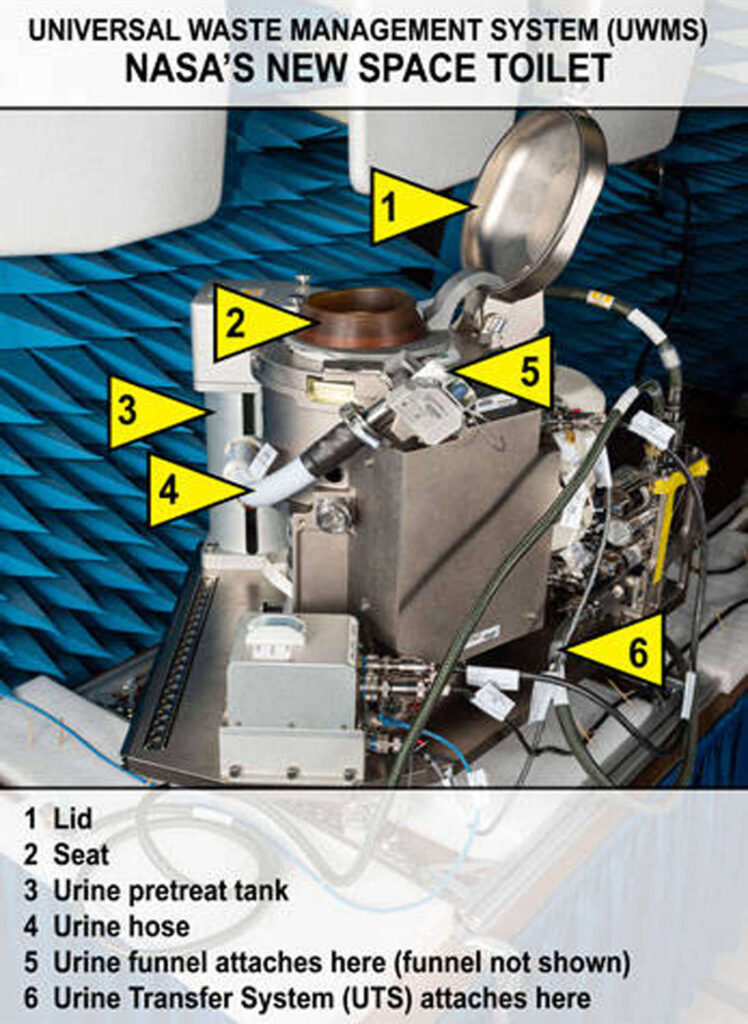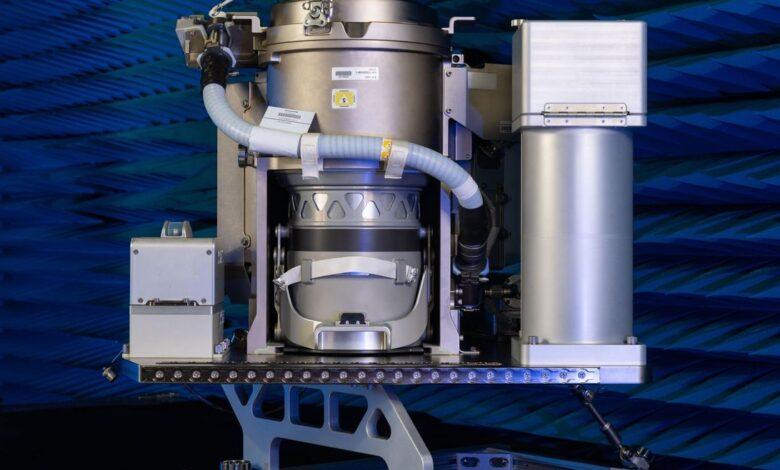The UWMS is finally ready for ISS
NASA’s new space toilet, the Universal Waste Management System (UWMS), will be launched to the International Space Station (ISS) this weekend, where astronauts will test how it works in micro-gravity. It cost $30 million and was designed with astronaut feedback in mind, to be more comfortable, easier to use, clean, and maintain. This was done by improving existing technology. So, the new toilet is lighter, smaller, better smelling, and more gender-inclusive than the Russian-made toilet currently in use aboard the ISS.
While toilets down here on Earth use water to flush away waste, space toilets use airflow. Poop is pulled away from the body and into a canister for later disposal, while urine is sent to the ship’s recycling system to be converted into drinkable water.
The goal is to make it so that the crew can focus on other things they need to do during space travel and make this a more comfortable and convenient way for them to deal with their bodily functions. Answering the call of nature in micro-gravity isn’t easy, but NASA’s hoping to make it a little more pleasant for their ISS crew.

One big complaint about the previous toilet design is that it wasn’t customized for the female experience. So, this is a chance to customize it more for the female anatomy and its use.
The current design is divided into two parts: with the crew using a funnel and hose for peeing, and a seat for bowel movements. The UWMS is designed so that the funnel and seat can be used simultaneously.
All micro-gravity toilets rely on one important thing: suction. Suction makes sure that the waste produced by the astronauts actually gets pulled into the toilet and doesn’t inadvertently float around the crew cabin. To pee in the current toilets onboard the ISS, astronauts use a funnel attached to a hose, with a fan inside, which pulls the urine into a tank. For poop, astronauts ‘sit’ over a tank that uses the same fan that pulls their stool into a baggy.
However, another major factor is the smell. Here’s what Jason Hutt, Orion capsule engineering lead tweeted last month:
“If you want to recreate that used spacecraft smell, take a couple dirty diapers, some microwave food wrappers, a used airsickness bag, & a few sweaty towels, put them in an old school metal trash can and let it bake in the summer sun for 10 days. Then open the [lid] & breathe deep”.
That shouldn’t be a problem with the UWMS. The new model comes with an odor-bacteria filter.
“It’s been said that the air coming out of the toilet is some of the nicest smelling air on the spacecraft”, Melissa McKinley, a system project manager at NASA, said.
However, perhaps, the most important upgrade is the reduced mass because the UWMS is 65% smaller and 40% lighter than the toilet currently aboard the ISS, which means more room for the astronauts, and a safer launch.
Another major feature of this toilet is that NASA engineers used a special 3D printing technique to make various parts of the system out of exotic metals like Inconel, Elgiloy, and titanium. These are robust metals, which are needed so that the toilet can withstand a very acidic solution used inside the system to treat the urine. Urine can sometimes contain solid deposits that get stuck in the toilet and build up over time, so NASA pretreats the urine with an acidic solution to break those deposits down before it sends it to an onboard recycling system.
One last big upgrade on this system is that it’s all automatic. Right now, astronauts need to turn on a switch to use the other toilets on the ISS, but the UWMS fan automatically comes on when astronauts either remove the funnel from its cradle or lift the seat to the ‘commode’.
The toilet was supposed to launch on Tuesday aboard a cargo capsule as part of a routine resupply mission but was delayed due to weather. If all goes well, NASA also plans to install the toilet on Orion for a flight test that will send astronauts on a 10-day mission beyond the Moon and back.
Source cbc.ca

